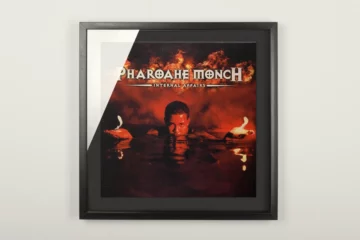Fewer samples and more instruments: With »Check Your Head« the Beastie Boys returned to their beginnings. However, they sprinkled punk and rock only very sporadically on these twenty tracks. Rather, Adam Horovitz, Adam Yauch and Mike Diamond developed their own clear style. This peculiar noisy-pleasant sound can be recognized even today directly after a few seconds. Too uncool for the US hip hop of those days, too cool for the alternative rock of those days. But still creative through and through. However, the Beastie Boys didn’t come up with that easily.
At the end of the eighties, Horovitz, Yauch and Diamond had presented a milestone of hip hop with »Paul’s Boutique«. What already at that time music press and scene noticed. (Chuck D of Public Enemy is said to have told in an interview with the U.S. magazine Vibe that everyone in the black hip-hop community knew: »Paul’s Boutique« has the best beats). Except the record didn’t sell at all. Which fits perfectly with today’s legend-making. But at first it hurt a lot. And it had consequences – especially for the Capitol label.
It felt like every newcomer to the recording of »Check Your Head« was replaced again by someone newer to the company, Horovitz once said. Their new A&R would have come into the studio in Los Angeles at the time and the band would just play him some old jam. It was supposed to be a joke. Only: the joke didn’t even interest the A&R. After the exchange of a few phrases between band and label employee, he simply said goodbye. Today it can be clearly read out there: The label didn’t care what the Beastie Boys were doing. Which also meant: complete freedom. (In the meantime, there was even the idea of recording an instrumental album).
The fact that the process of creating »Check Your Head« was rather slow can be read in the »Beastie Boys Book« published in 2018. In it, Horovitz and Diamond report on the recording of the record: After they found the studio, they went through old tapes. On them, they found mostly a lot of nonsense and phone calls to restaurant delivery services. But there were also a few good ideas in between.
In general, this album veers in a different direction so often that the anarchic joy of it becomes more apparent with every second of »Check Your Head«.
»On one particular tape was a long space-out jam that had a few sensational-sounding bars of playing on it«, said Horovitz. They sampled the bars with an MPC60 drum machine, Yauch wrote a few lines, and then it was time to record. The result: »Something’s Got To Give«. The track is mainly reminiscent of dub with its reverberating sound and distorted vocals. »It certainly is odd that a three-and-a-half-minute song would take two years to finish, but that’s how this record was made.«
Producer Mario Caldato told Flood Magazine a few years ago that the sessions ended up in the middle of the night mostly listening to records together. Just before, they would go record shopping, then the Beastie Boys and Caldato would listen to the albums of Sly Stone, James Brown and Lee ‘Scratch’ Perry. The influence of those late-night sessions should not be underestimated, Caldato said. However, the American-Brazilian producer also despaired at times. Because nothing was finished for a long time.
[review]Their third album sounds perhaps even more cohesive than its predecessors, because the Beastie Boys could just really take any freedom here. Also because it may have been their last album for Capitol. (It wasn’t.) And despite tracks like »Time for Livin’« that sounded like they were from their first EPs. For a long time, the band didn’t even have lyrics for that track. Until Mike Diamond got carried away and crowed a few lines through a karaoke mic in the spirit of Sly Stone’s song of the same name. »So What’cha Want« is a track that most clearly has the Beastie Boys’ idiosyncratic sound in it. Next to the funky »In 3’s« is the down-tuned »Namaste«, and in general, this album veers in a different direction so often that the anarchic joy of it becomes more apparent with every second of »Check Your Head«.
By the way, this album, released on 21th of April in 1992, did not become a commercial success either. But it showed the label (and the band) that there were already a lot of fans for this sound. The fact that the Beastie Boys regained self-confidence with this album was not due to sales figures – but to the long process, to their self-discovery. And ultimately because of this sound, which only they could create.









